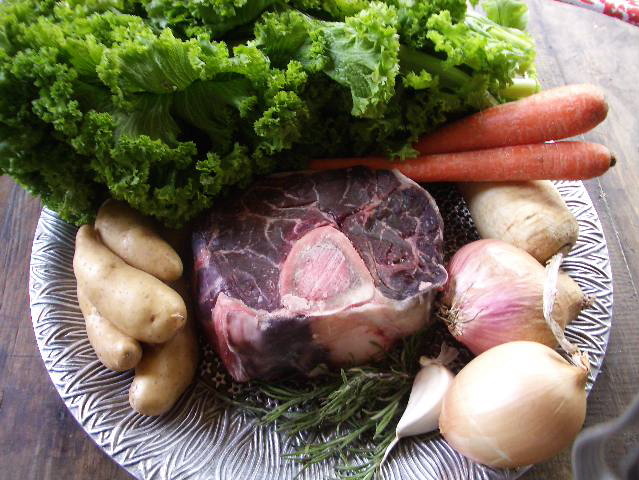I love animals and I love meat. It's a mind-numbing conundrum and one you can read all about in the news these days. From the works of Michael Pollan, Eric Schlosser and now even the novelist-turned-nonfiction-writer
Jonathan Safran Foer, many of us have come to know a lot more about factory farming, industrial agriculture, our government and even our own hearts than perhaps we wanted to. And let me say right off the bat that I'm aware I'm writing from a position of privilege. I can afford to buy the boutique meats that let me breathe easier. But if you learn even just a little bit about factory farming—about how we're forcing ruminant cows to eat our government-subsidized surplus of corn, thus destroying their digestive systems and making them so ill they need to be shot up with the antibiotics that are ultimately destroying our own health; about how the amount of methane gas released from factory farms far exceeds air pollution from cars—you know the answer is not just different meat. It's less meat. In a perfect world, no meat. But this isn't that. Still, for your own health and for that of the planet, it's not a bad idea to consider building your diet around legumes and whole grains and vegetables. Invent a new paradigm for your plate, beyond the antiquated notion of meat, starch, vegetable.
I don't eat a lot of meat. There are times when I've eaten none at all. Right now I'm happy with eating it once in a while. (Fish is going to have to be a whole other conversation.) In Manhattan, I am thrilled to say that
Dickson's Farmstand has opened a butcher shop in the Chelsea Market. They sell what they source from farms around New York City that are committed to humanely-raised, high-quality meats and poultry. Upstate, from the farm up the road, we can get pastured goat and lamb and fresh chickens that taste like the chicken of your dreams. I have met these animals and seen how they live, and learned about how they die. (The baby goats are shot in the head. The farmer told me this is expensive and messy but it's also quick and painless and the only way he's sure they do not suffer at all.)
When I do cook meat, I often use it as a flavoring rather than the centerpiece of a meal. I might cook a little pancetta with greens to eat over rice or pasta. I might put a smoked hock in to flavor a pot of beans. I might make a curry with lots of vegetables and just a bit of chicken. I made this beef soup after I saw that beautiful beef shank pictured above on a visit to Dickson's. With some sharp mustard greens and assorted root vegetables from the farm—and with a bitter chill brewing outside—I decided not to overthink it.
Beef Shank Soup
serves 2
-
— 1 conscientously chosen meaty beef shank, preferably well marbled, aged and with the bone marrow intact
-
— 1 tablespoon olive oil
-
— 1 small onion, diced
-
— 2 carrots, in chunks
-
— 3-4 fingerling potatoes, in chunks
-
— vegetable stock, or water
-
— fresh rosemary
-
— 1 bunch mustard greens, roughly chopped
Heat the oil in a large stockpot or Dutch oven and then brown the shank well on both sides. Remove from pot and set aside on a plate. Pour off fat if it looks like more than a couple of tablespoons.
In the same pot, saute the onion until it's soft and golden, scraping up any bits stuck to the bottom. (You could also deglaze with a little red wine but I didn't do that for mine.)
Add all the vegetables except the mustard greens and stir with the onion for a couple of minutes. Then put the shank back in, and pour in vegetable stock or water (or a combination) to cover. Add a couple of sprigs of rosemary and salt to taste and cook at a simmer, partially covered, until the meat is very tender and can be forked off the bone, at least 2 hours.
Once the meat is done, stir in the mustard greens and simmer for an additional 10 minutes with the lid on. Add salt and freshly ground black pepper to taste.
 Download Recipe
Download Recipe

 Download Recipe
Download Recipe






0 Comments